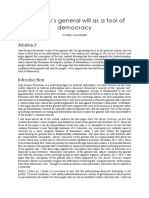Writing coursework, especially for subjects like GCSE Physics, can be a challenging task.
It requires
a deep understanding of the subject matter, the ability to conduct research, and the skill to present
findings coherently. GCSE Physics coursework on topics such as craters may involve practical
experiments, data analysis, and the application of theoretical concepts.
Students often face challenges in managing their time effectively, conducting experiments, analyzing
data, and expressing their ideas in a structured manner. Additionally, there may be pressure to meet
deadlines and adhere to specific guidelines set by the educational institution.
For those who find themselves struggling with their GCSE Physics coursework, seeking assistance
can be a viable option. ⇒ HelpWriting.net ⇔ is a platform that offers academic writing services,
providing support for students in completing their coursework successfully. By ordering from such a
site, individuals can benefit from the expertise of professional writers who are well-versed in the
subject matter and have experience in crafting high-quality academic papers.
However, it's crucial for students to approach such services with caution, ensuring that they adhere to
academic integrity and ethical guidelines. It's recommended to use external help as a supplement to
one's own efforts and learning rather than as a substitute for personal understanding and engagement
with the coursework material.
Remember that seeking help is not a sign of weakness, but a practical approach to managing
academic challenges. Balancing coursework demands and seeking support when needed can
contribute to a more fulfilling and successful academic experience.
�From this table of results, it is quite simple to spot a trend. Begin by setting out the apparatus as
shown in the diagram above. There were a few which were not accurate and this was probably due
to the ball being dropped with force or at an angle. As an independent variable, it simply means I will
need to change the mass throughout the experiment in order to demonstrate a possible influence.
When it hits the sand the kinetic energy is transferred into the sand as heat and more kinetic energy
moving the sand out of the way. The number of data collected makes the results reliable. Although
every care was taken to measure the heights exactly using clamp stands and metre rules it is possible
the measurements were slightly out which could have moved all the results down or across just by a
fraction and suggest a different analysis of them. Many impact features have remained circular in
outline since their formation, but many have not. Herschel, which preserves a very nice hexagonal
shape. I have chosen mass because I believe this will have a powerful relevance to the shape, size and
depth of a crater and also I believe it will be interesting to observe how varying masses affect the
diameter of a crater. An improvement to the method would be to always measure the volume of the
sand used and smooth it down to the marked level on the side of the container. Air resistance - It is
known that small objects have very little air resistance. To produce reliable results I will need to
ensure that only one of the variables is changed at a time and each recording is repeated three times.
However this may be difficult to carry out as it would have to be a fair test and to keep the force
applied the same for each reading it would be difficult. Therefore this proves that large objects are
affected by a significant amount of air resistance, this will change the way the object moves. I
believe I gained enough results in order to make an accurate conclusion on my hypothesis. This is the
perfect scale and size for me because I need it to go up to at least 60 cm and am planning to use
increments of 5 cm. This will make my results all the more reliable and accurate. PRELIMINARY
WORK: In order to ensure a fair test is carried out and the best possible variables are used hence
conduct an accurate experiment; I will need to carry out preliminary work. When comparing the
investigation graph and the predicted graph it is evident that the investigation graph only makes up a
small area of the bottom, right hand corner of the predicted graph at which point it relates to the
predicted graph numerically and almost exactly. This is because between the particles of non-
compacted sand, there will be spaces of air. Therefore the dependent variable is the actual diameter of
impact crater. I predicted that crater diameter increases with increasing mass, which is correct.
RESULTS: PLASTICINE MASS (G) HEIGHT (CM) DIRECTED SURFACE CRATER SIZE
(MM) 2 3 MEAN 5 00 Fine aquarium gravel 44 45 46 45 0 00 Fine aquarium gravel 52 53 53 52.66 5
00 Fine aquarium gravel 64 62 64 63.33 20 00 Fine aquarium gravel 66 67 67 66.66 25 00 Fine
aquarium gravel 74 77 74 75 30 00 Fine aquarium gravel 79 81 79 79.66 35 00 Fine aquarium gravel
81 83 82 82 As can be seen, each recording was repeated three times. After I had dropped the marble
and took my results, I had to shake the tin, until the sand was flat (in my eye). Also as this is set as
an independent variable, I will have independent control over the values I set it to prior to
experimentation. The more force exerted onto the sand the more sand it is able to push away
therefore making a bigger crater. The size of the crater will depend on the size and speed it was
traveling at the point of impact. From this video I can tell that heat energy and light energy is
produced. This would have made sure that the sand was roughly the same density throughout.
�A solution for this is to place a big enough tray to hold the stand this way the marble will fall into the
tray rather than the table or the floor also the sand will fall into the tray which is easy to collect after.
And the more kinetic energy stored by an object, the larger the impact of collision. The crater length
does indeed vary proportionally to the vertical height, but the crater depth appears to have no
relationship whatsoever with the height (therefore the entry speed). The marble will be dropped from
various heights to cause a crater. I would also use a better system to measure where I was dropping
the ball in the box of sand as mentioned above, for example dropping the ball down a tube. Although
the points do not form a perfect straight line, using the line of best fit it is possible to determine the
sizes of craters produced by any given mass. The thing I will change in my investigation is height at
which the ball is released from. The more speed it builds up the more force it builds up. After this if
the ball had been dropped from a higher height it would have no longer produced a bigger crater
because there would be no sand left to push outwards. The range between the results was very
similar for both experiments yet it was finally decided that the depth was more suitable because it
gave a slightly larger range and seemed to follow a more logical pattern of results. Such a high-speed
impact produces a crater that is approximately 20 times larger in diameter than the impacting object.
The reason that the size of the crater was slowly was that the motion (speed) of the marble was
slowly increasing, so that means that the faster the marble is traveling the bigger the crater will be.
The only problem found with the method was that when the sand was dampened to make it hold the
shape of the crater for ease of measuring that if too much water was used this destroyed the
experiment because the water accumulated on top and flooded into the crater making it impossible to
measure, as a result, it has been decided that only 150ml of water will be added to the sand which is
just enough to ensure it is wet yet with no accumulating over spill. Geologists believe that an impact
such as that which formed the Chicxulub crater would be seismically equivalent to a magnitude 10 or
11 earthquake, and that the energy released would be at least 10 billion times greater than that
produced by a nuclear bomb. (From source 8). For example it takes a dropped, small ball longer to
hit the surface than a larger ball. I feel that the procedure was suitable although there are quite a few
ways in which the method could be improved. Possibly a rake or a large flat object could have been
used to level the sand and break up any clumps. The advantages were that I did not have to worry
about the density of the sand. Gravity and drag forces are involved in the dropping of the marble,
and then as it hits the sand, a small amount of kinetic energy is created. I will use a compass to
measure from one side of the crater to the other; this would allow me to get an accurate reading
when I put the compass against the standard ruler. Also during the impact, the kinetic energy is
transferred to the surface, moving the particles sand around. This would allow me to show that
distance across the crater is proportional to depth. They are thought to be huge lava flows that spread
over an area after most of the craters have already been formed. The fact that no more potential
energy is left to go to kinetic energy once the object has reached it’s terminal velocity means that in
theory, the PE at the start of the fall should be equal to the KE at the end. In many cases, there is a
central peak or several peaks within a crater. However this is why I took many readings of every
diameter, which would lower the amount of outliers and giving me more reliable results to work
with. I would expect the line graph to show the same trend as seen in the graph of gravitational
potential energy against crater size. Refer to graph 2. The graph shows that the crater size (y)
increases by a significant amount for each of the increasing masses (x) used. Both graphs A and B
follow this pattern, however both show strict lines of best fit, graph A shows a line of best fit that
goes perfectly through the results at the extremities (e.g. lowest and highest heights) and has an
interval increase of about 5mm. From this table of results, it is quite simple to spot a trend.
�Also it was hard to measure accurately the area and the radius of each of the craters made. The
reason that the size of the crater was slowly was that the motion (speed) of the marble was slowly
increasing, so that means that the faster the marble is traveling the bigger the crater will be. I am
going to use the same ball bearing and the same depth of sand throughout in order to make this a
controlled, fair test. There are a few factors which would have affected the reliability of my
investigation, for example the sand may not have been level and it was difficult to ensure that the
ball was dropped from the correct height. I think that this key observation may provide the principal
clue to understanding polygonal crater outlines. By this I can decide not to use these outliers for my
averages and my graphs, but as they are not that major and wouldn’t make much a difference to the
trend that is being spotted. Air resistance will act upwards against the movement and when gravity
and air resistance are equal, then the ball will no longer accelerate, but fall at constant velocity. How
does the drop height of a small and a large marble affect the size of t. Making the energy transferred
different from each other at the point of impact. As the conditions will be the same. i.e. the
gravitational potential energy, room temperature and heights the marble is dropped from. Also with
reference to my background knowledge I proved that the gravitational potential energy stored by the
plasticine at the point of release is proportional to the kinetic energy transferred to the surface
medium. I had to be extremely accurate with my compass, and had to make sure I measured from
the very end of the crater to the other. There are a range of factors that could have affected all my
recordings, but do not influence a change in trend as these would simply add constant to my results.
Therefore gravitational potential energy is equivalent to kinetic energy which overall depends on
how much mass an object contains and the height at which it is falling. A lot more reasonable than
holding the ruler upright with my hand. However it is optional to wear safety goggles in order to
avoid a rare occasion of any fine aquarium gravel coming into contact with eyes. There are many
factors that have a form of influence: Mass - The gravitational potential energy stored by an object is
significantly determined by the amount of matter it contains. Investigate how mass affects the
diameter of an impact crater. In accordance to my investigation this proves that mass does have a
form of influence to the amount of kinetic energy stored by an object, which furthermore determines
the impact of collision. This made the average closer to the repeat readings though the average was
still a little further from the repeat readings than I would have anticipated. On this occasion there is
no obvious and major outliers, which makes the graph very accurate and reliable. There is also drag in
this experiment which could limit the speed of the marble being dropped, therefore decreasing the
diameter of the crater. The aim of this piece of work is to investigate the factors that affect how.
Callipers could be used to measure the width of the crater whereas better technology could be used
to drop the ball. The second is evenly between air resistance and gravity. The shape of the object as it
was plasticine could have changed after each test due to the impact when it hit the sand, which
might have meant other depths were recorded with the object in longer shapes possibly distorting the
results by making them larger such as the larger increases from about 1-2m. This was overcome by
placing a wooden stick across the diameter of the crater and placing the calibrating stick vertically
from the bottom of the crater and where the calibrating stick met the stick lying across the diameter,
the reading was taken. The method described above was also followed step-by-step. There are just
two obvious and clear outliers, which I have circled in blue as well. This is because the mass in the
two marbles is different so the PE is different, less in the smaller one and higher in the larger one.
�For example you could take a wider range of readings or repeat the experiment a few more times in
order to be more accurate. In this case before you drop the ball bearing it has GPE which is
transferred into KE when you realise it. However the crater was only 95mm, which is only 10mm
bigger than my result from dropping the ball bearing from 1 metre. If the golf ball was dropped from
a shallower angle then the crater would be longer, but the diameter of the crater would. I am going to
use the same ball bearing and the same depth of sand throughout in order to make this a controlled,
fair test. The lava within the crater has covered the collapse features of the crater rim and the lower
parts of the outer rim scarps. I am pleased because by looking at the Results Table above, it is clear to
see that the higher up the Ball bearing the bigger the crater. When the ball hits the ground all of the
potential energy is converted into kinetic energy. I am happy with the accuracy of my results and
they did not vary more than I would like. The change in the amount of times I was going to do my
experiment improved my final results because it made them more accurate. To investigate the height
dropped from a crater and the affect in the size. We didn’t include most of the outliers which I
thought were extravagantly different to my other results, so it wouldn’t affect my overall results that
much. For instance if the sand I was dropping the marble into had already been disturbed, my results
would be different to what they should have been, therefore giving me an inaccurate datum. The
only disadvantage is that by using this formula, the crater has to be a perfect semi-sphere, however
by eye the crater was obviously not a perfect semi-sphere. This is because the force by the sand
would have to be a constant. I also chose to do this because if I found a way of carrying out the
experiment using a better technique to gather more reliable results, I also did a preliminary test in
order to choose suitable heights for the experiment and to decide to what degree I will be measuring
the diameter with e.g. 2 D.P. For Deep Impact, this stage will last around 300 seconds. This is proven
by the fact that the greater the distance between the ball and the ground, the greater the gravitational
potential energy that the ball possesses. I had to balance it on a ruler, which was horizontal to its
axis, on the point of which I was measuring it from. The situation mid-way along the length of the
crack is pretty simple; a tensile (pulling apart) stress (red) acts to open the crack. The advantages
were that I did not have to worry about the density of the sand. From this I should be able to
calculate an average which will help me in selecting a reasonable criterion for each variable. This
procedure should continue until you have recorded final results for 35g. Does the height of a crater
affect the diameter of the crater produced? What do we see when we examine an impact crater like
Tycho. This also shows that there will be a crater formed, and will have a definite rim. However the
size of the marble will have to stay the same as it will affect the size of the crater. For example it
takes a dropped, small ball longer to hit the surface than a larger ball. I have predicted this because
the higher the object is dropped from the more gravitational potential energy the object will gather,
therefore increasing the speed of the ball, concluding the ball will have more of an impact on the
surface as the gravitational energy is transferred as kinetic energy to the sand. But now looking at it,
they do look like outliers, meaning some of the range bars overlap.























































































































